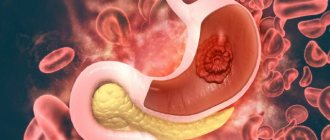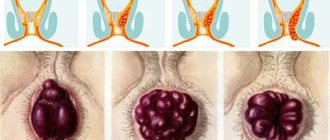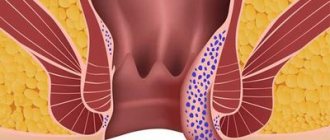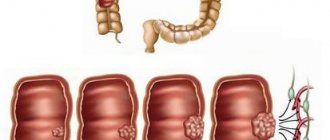- Reasons for rising temperature
- Temperature indicators for cancer
- Low-grade fever in cancer
- High fever with cancer
- Low temperature in cancer
- Temperature during chemotherapy
- Is it necessary to reduce the fever during oncology?
Temperature in cancer is not a typical sign of a malignant process; only in rare cases are cancer cells capable of independently initiating a temperature reaction by releasing what is believed to be active substances. One cannot but agree that a cancer patient has more reasons to increase body temperature, both internal and iatrogenic - arising as a result of therapeutic measures.
Reasons for rising temperature
There are several reasons for an increase in temperature in a cancer patient, but most often the temperature reaction is a consequence of certain processes:
- Vital activity of tumor cells producing biological products. This leads to systemic hyperthermia, which occurs in some types of lung adenocarcinoma, when a paraneoplastic syndrome develops with debilitating fever and joint pain. After removal of the tumor, all pathological manifestations disappear.
- The existence of a cancerous conglomerate in tissues. Due to a decrease in local immunity and impaired blood supply, inflammatory changes develop, for example, with lung carcinoma or pulmonary metastases.
- The body's reactions to the absorption of toxic substances from a disintegrating cancer node.
- Aggressive therapeutic measures. As a rule, these are complications of immune suppression after a course of chemotherapy.
In all cases, it is necessary to quickly understand; without an accurate understanding of the pathogenetic mechanism of the temperature reaction, it is impossible to prescribe adequate treatment. Sometimes identifying cause-and-effect relationships requires more effort than diagnosing a malignant tumor.
Classification of the disease
After confirming the oncological process in the body, the doctor must determine the stage of the cancer. This allows you to select the optimal treatment option and make a prognosis for recovery. There are 4 stages in total.
| First stage. | The neoplasm is not large in size and has not yet managed to grow deeply into the surrounding tissues. |
| Second stage. | The tumor gradually increases in size, but remains within the tissues from which it developed. Single metastases may be detected in the lymph nodes. |
| Third stage. | Malignant cells spread into surrounding tissues. |
| Fourth stage. | Metastases are found in distant organ systems. |
Separately, stage zero or cancer in situ are distinguished. In this case, the tumor is located within the tissues and does not grow into neighboring structures. It can be easily removed surgically.
Temperature indicators for cancer
Fever in a cancer patient, as well as a decrease in thermometer readings below 35.5°C, is an abnormal condition; body temperature in cancer should be normal, and this should be strived for when selecting treatment.
Daily fluctuations in heat exchange are natural in healthy people; the difference between the morning and evening thermometer readings can reach up to one degree. Active movements and eating, nervousness and nightmares also change degrees, but this is imperceptible to a person.
Failure of adaptation mechanisms in a cancer patient slows down the normalization of temperature fluctuations, extending it over time. Even a slight change in heat exchange affects the functioning of all organs: the nervous system is exhausted, the cardiovascular system reacts, immune mechanisms and reparative processes are inhibited.
The range of normal values is two degrees between 35.5° and 37.4°, the rest is pathology.
Prognosis and life expectancy
Beating stage 4 cancer is difficult. This form of the disease inevitably leads to death. In some cases, death does not occur from progression of the tumor process. An important role is played by intoxication of the body with toxins, a decrease in the functional activity of internal organs, and the rate of spread of metastases.
Doctors, as a rule, are cautious in disclosing the prognosis to close relatives. The life expectancy of patients with stage 4 cancer is determined by several factors. This is the state of immunity, age, localization of the tumor, the presence of concomitant pathologies, the general and psychological state of the patients. Survival rate during the first 5 years is 10-15%. However, in most patients death occurs much earlier. The older the person, the lower the survival rate.
Low-grade fever in cancer
Low-grade fever is limited by thermometry readings from 37.5°C to 38°C. This is a prefebrile state, but short-term low-grade fever is not considered to require medical intervention.
A prolonged increase - more than 5-7 days without a tendency to normalization will not be resolved without the complicity of a doctor; its cause may be inflammation and even sepsis, requiring the prescription of antibacterial drugs.
When a zone of reduced blood supply appears in the center of a cancer conglomerate with the formation of necrosis—the disintegration of tumor tissue—it can begin with local hyperthermia—local heating of the soft tissue over the lesion, and with an increase in the volume of decay products absorbed into the general bloodstream, lead to persistent low-grade fever.
Cancer - a disease of the 21st century
Cancer is a very serious disease, which is characterized by the formation of a tumor in the human body. It quickly increases in size and affects neighboring tissues. In the development of the disease, it is customary to distinguish 4 stages, each of them is characterized by more severe symptoms and damage.
Scientists still cannot identify the exact reasons for its appearance. They identify a group of factors, the presence of which significantly increases the likelihood of cancer (obesity, alcohol and smoking, poor environment, illiterate drug therapy, working with chemicals). Treatment involves a comprehensive approach and includes medications, surgery, radiotherapy and chemotherapy.
High fever with cancer
High temperature or febrile fever is diagnosed when the thermometer is above 38°C. On the one hand, this indicates a protective reaction of the body, but fever after chemotherapy is usually an unfavorable consequence of a significant decrease in neutrophil granulocytes, a subtype of leukocytes.
Fever with a decrease in immune cells in eight out of ten cases is caused by a septic condition in the absence of “classical” signs of blood infection and requires emergency treatment measures.
Often, prolonged fever just above 38°C manifests itself in multiple liver damage by cancer metastases with the development of liver failure.
A high temperature can manifest itself as a malignant brain tumor localized near the center of thermoregulation, or perforation of colon or stomach carcinoma into the abdominal cavity.
Third
At this stage, the tumor finally makes itself felt. However, it is almost impossible to cure the disease in its later stages, which often causes death.
Pay attention to the signs:
• The formation reaches more than 5 cm, now it is impossible not to notice it during examination; • Cancer affects the entire lung or even both, as well as the main bronchus; • The number of metastases in the lymph nodes increases.
The third stage of lung cancer can be divided into two stages:
1) The tumor grows up to 7 cm, affects neighboring organs, and prevents free breathing. 2) The cancer spreads to the lymphatic system from the back of the sternum, and also spreads to the diaphragm and pericardium.
Signs of pathology
• increased cough; • chest pain; • pain in the shoulders, loss of sensitivity in the fingers; • greater weight loss; • sputum with blood; • fever; • respiratory tract infections; • wheezing during breathing.
Low temperature in cancer
A decrease in the thermometer below 36°C with an increase or decrease in the number of leukocytes, along with persistent tachycardia or shortness of breath, can also be a manifestation of systemic inflammation syndrome - sepsis. Moreover, a cancer patient does not necessarily have a pronounced decrease and increase in leukocytes; less than 4 thousand or more than 12 thousand are sufficient, but functionally incapable of adequately fighting infectious agents.
Carrying out chemotherapy at the Yusupov Hospital
Treatment of oncological diseases is carried out in comfortable conditions using modern equipment, innovative techniques and drugs. At the Yusupov Hospital, cancer treatment is carried out using various methods, including chemotherapy.
Experienced doctors at the clinic apply international and Russian protocols for chemotherapy. The combination of new generation drugs is selected strictly individually. But it is impossible to exclude individual reactions of an organism weakened by disease and chemicals.
The Yusupov Hospital provides assistance for complications after chemotherapy, and also provides symptomatic treatment and rehabilitation of people with cancer. Detailed information about the clinic's services can be found on the page.
Temperature during chemotherapy
To carry out chemotherapy, normal body temperature is required - a marker of the normal state of the body at a given time. Any deviations in thermoregulation from the norm can be a manifestation of low-grade inflammation or intoxication. Carrying out chemotherapy for a disintegrating cancer conglomerate can aggravate the pathological process and cause internal bleeding.
An increase in temperature during chemotherapy and the development of a febrile state a week after the course indicates hematological complications that are life-threatening if immunological protection is insufficient.
Dying signs
All patients with stage IV cancer sooner or later develop signs of death. In the last days of life, such patients sleep a lot, under the influence of potent painkillers. It is important for loved ones to accept the inevitability of imminent death. They should also know the obvious warning signs of death:
- Negative thoughts, indifference to everyone around, apathy
. Such signs indicate that a person has come to terms with his diagnosis. - Disturbances in the functioning of the central nervous system
. They manifest themselves in the form of an inadequate psycho-emotional reaction. - Ancestor and coma
. They can occur suddenly, so patients often require additional caregivers. - Predagonia
. This condition continues for several days. It is characterized by hallucinations, decreased blood pressure, and pale skin. - Clinical death
. All systems in the body cease their activity, but the metabolic process at the cellular level still persists. - No signs of brain function
. - Agony
. Occurs as a result of prolonged oxygen starvation and impaired blood circulation. Manifests itself in the form of intermittent breathing. It becomes superficial, accompanied by whistling sounds.
In a state of agony, patients live for another 3-4 hours. Then comes death. A sign of the latter is the cessation of the functioning of brain cells.
Is it necessary to reduce the fever during oncology?
Do not in vain ask the question: “What temperature is not dangerous for cancer?” — in case of a malignant disease, any disturbances in heat exchange are unfavorable. In part, degrees above the norm are not even important; it is enough that there is a temperature during cancer when there should not be one.
You can reduce the temperature reaction by taking NSAIDs if it is difficult for the patient’s body, but it is more correct to immediately consult a doctor. Primary differential diagnosis is carried out at the patient’s bedside, the main thing is to exclude blood poisoning due to a malignant process.
The development of cancer without an increase in temperature is impossible; at different periods of the disease, a pathological reaction can be a complication of treatment or progression of tumor lesions; it is necessary to quickly and, most importantly, accurately make a diagnosis and offer an optimal solution to the problem. Euroonko has all the conditions for adequate medical care for any patient and at any time of the day.
Book a consultation 24 hours a day
+7+7+78
Bibliography
- Pathophysiology 4th ed. edited by Novitsky V.V., Goldberg E.D., Urazova O.I.; GOETAR-Media; 2009; v. 1.
- Ptushkin V.V./ Treatment and prevention of infections in patients with neutropenia // Mater. III Ross. oncol. conf.; 2003.
- Sakaeva D.D., Orlova R.V., Rykov I.V., Shabaeva M.M. /Practical recommendations for the treatment of infectious complications of febrile neutropenia and the prescription of colony-stimulating factors in cancer patients // Malignant tumors: Practical recommendations RUSSCO; 2017; v. 7
- Ugolnik T.S. / Heat exchange disorders. Fever: methodological recommendations / Gomel: GoGMI, 2003.
Stage four cancer
The last or fourth stage of cancer is characterized by an irreversible process when pathological elements begin to quickly spread throughout the body, attacking healthy tissues and organs. At this stage it is quite difficult to save the patient's life. However, doctors provide medication and psychological support to alleviate the patient’s condition and slightly prolong his life. The fourth stage of cancer has the following symptoms:
- the formation of malignant formations throughout the body;
- damage to the main organ systems (esophagus, liver, brain, lungs);
- the appearance of aggressive types of cancer (for example, myeloma, melanoma, etc.).
Due to the rapid spread of metastases, the patient is getting worse every day. At this time, family and friends should understand what feelings the person is experiencing. This allows you to help survive the last stage of life and reduce suffering.











